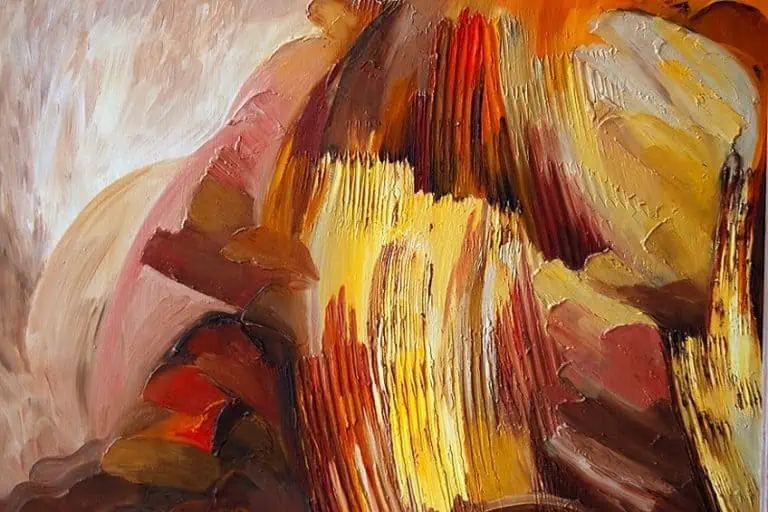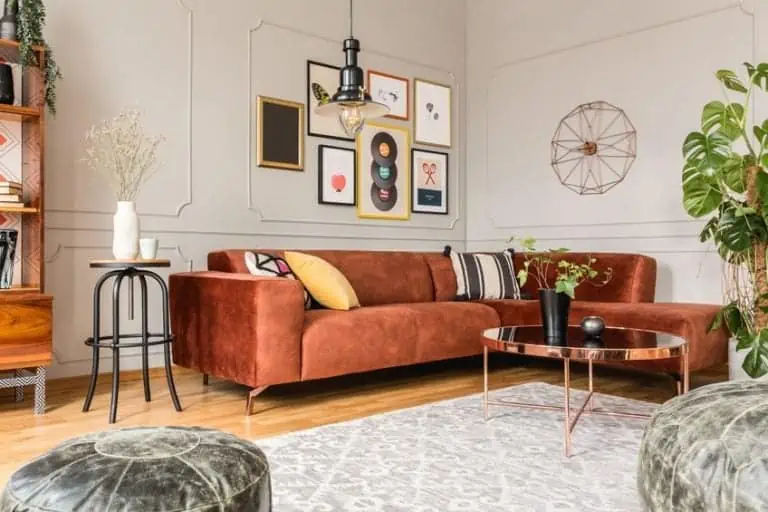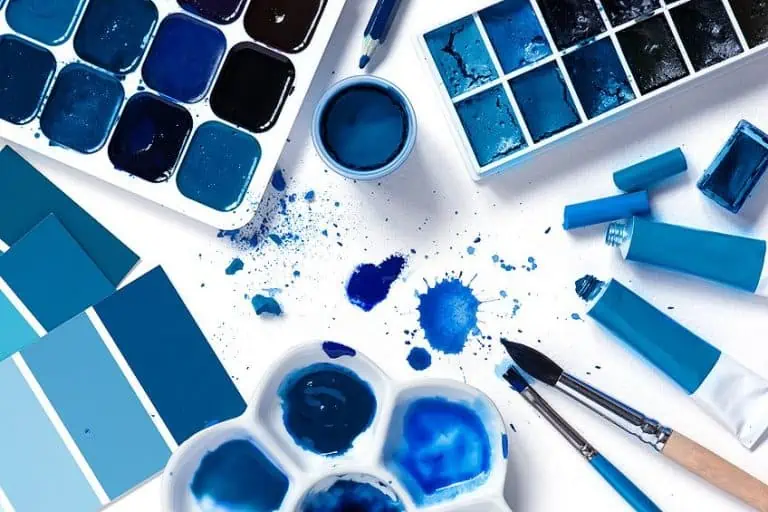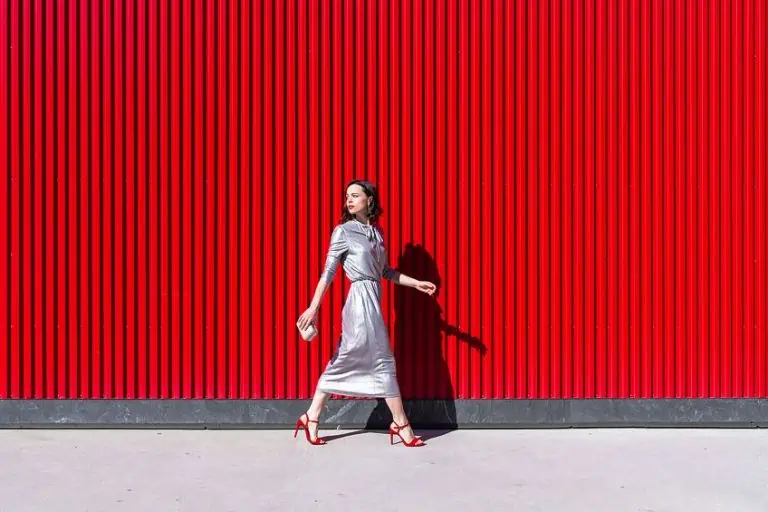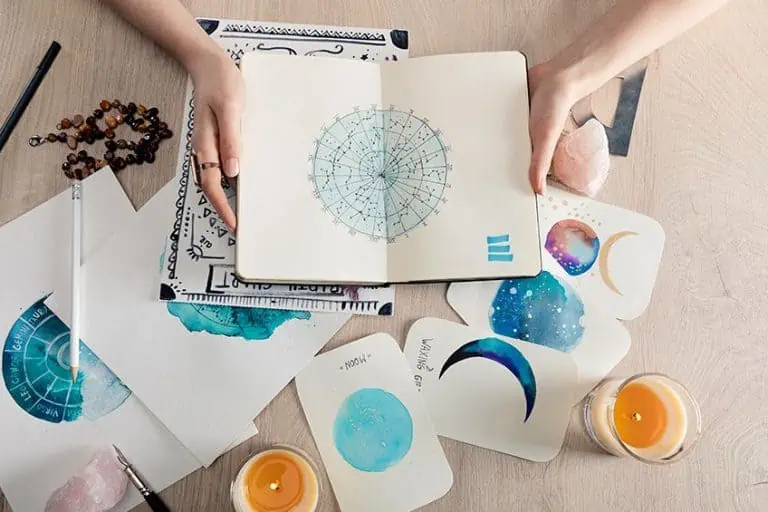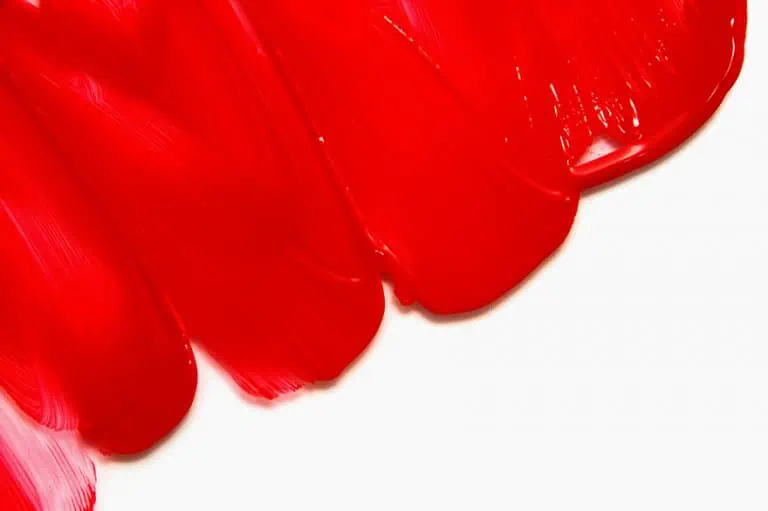Celadon Color – What Color Is Celadon Green?
This post may contain affiliate links. We may earn a small commission from purchases made through them, at no additional cost to you.
Celadon – it’s not a word that will easily roll off your tongue, but if you say it a few times, it just works. That is precisely how we can describe the celadon green color – a color that can be incorporated in any home. But who coined the term “celadon”, and what color is celadon green? In this article, we will look at the history of the pale green glaze that originated in China, and we will also have a look at what colors go with celadon green. We hope you enjoy the read as we discover the wonders of this soft green shade with an unusual name.
Table of Contents
What Color Is Celadon Green?
So, what color is celadon green? The answer would simply be “soft or pale green”. It is a color you can use as a paint or a glaze, and it first originated in China, where the color was developed and refined. Celadon green is sometimes called jade green, and you won’t be incorrect when describing it the same way, although these are separate colors. Celadon green has undertones of both jade and gray.
| Shade | Hex Code | CMYK Color Code (%) | RGB Color Code | Color |
| Celadon | #ACE1AF | 24, 0, 22, 12 | 172, 225, 175 |
The Meaning of the Celadon Green Color
The celadon color is a soft pale-green color that denotes calmness. Using celadon for home interiors will help with relaxation and create a sense of calm and focus. Although there is no specific meaning related to celadon, because of its green hue, it could be associated with new life and beginnings. When used in interior design, celadon green can be paired with other colors to create a tranquil space that denotes growth and balance.
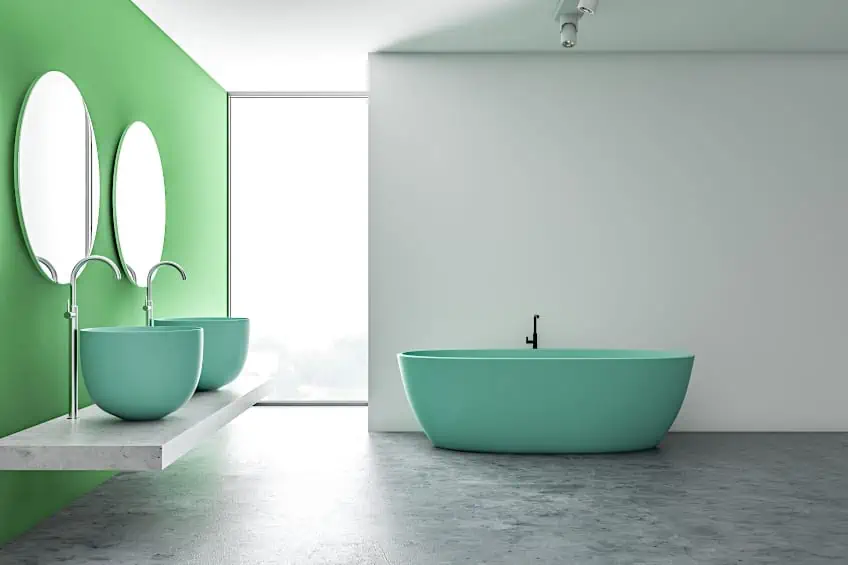
How to Make Celadon Green Paint
Celadon green is often confused for mint green, however, both colors are made differently. While mint green has a fresher look thanks to the colors white and blue, celadon green can be created by using bright green and simply adding gray.
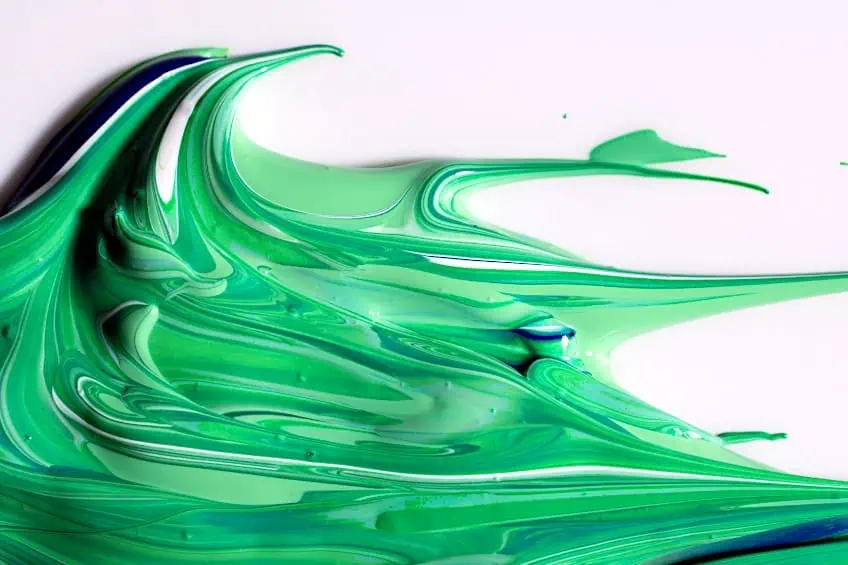
Celadon Color: A Brief History
Celadon is a term used to describe pottery that denotes both glaze and what we call the jade green color. It is known as “greenware,” which specialists now use to describe the type of transparent ceramic glaze. This pale green glaze originated in China, however, the word is European, and special kilns known as Longquan kilns in the Zhejiang province are renowned for their celadon glazing techniques.
The production of the celadon glaze soon found its way to other areas in East Asia. These include Japan and Korea, who both produced glazed pottery. Some European countries also started production, but it was only a minor element. The finer pieces are in porcelain – using the celadon green paint color and glaze in stone and earthenware. The pale green glaze that originated in China contains iron oxide content and is created in a kiln at very high temperatures. The materials used are refined, as other chemicals could drastically alter the color. Too much oxide will produce an olive color, and too little oxide will give off a blue effect. The presence of the chemicals may even cause a yellowish tinge to the glaze.
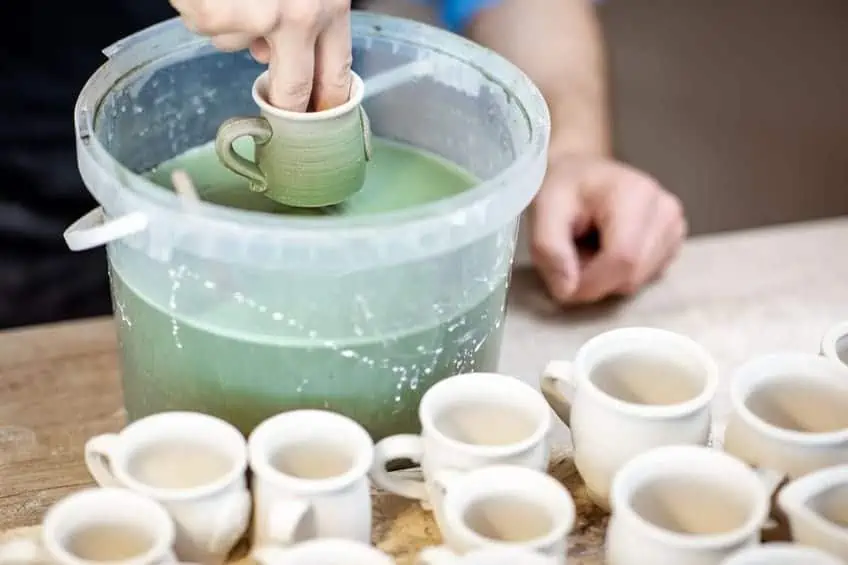
The Chinese Imperial court valued celadon wares for many centuries and in Korea, they produced their wares under the Goryeo Dynasty from 918 to 1392. These are regarded as classic wares of Korean porcelain. In the 10th century, Korean potters changed Chinese techniques and started producing their version of celadons. These potters used iron-rich clay to make the vessels and incorporated a glaze consisting of iron oxide and manganese oxide with quartz particles.
The greenware ceramics produced in ancient Korea were deemed some of the finest and most elegant pottery pieces of the time. The light blue-green color containing hints of gray and jade undertones is how we would best describe celadon green. The value of an old celadon ranges from $500 for poorly preserved pieces, such as a deformed bowl or an article that may have a slight crack in it. Still, the value increases by huge amounts for a perfect specimen, many of which can be seen today in the National Museum of Korea. Old celadon is immensely valuable and even damaged pieces have some value.
Celadon Green Used in Famous Paintings
Celadon green is such a distinct color, and, although the following famous paintings do not specifically mention this unique color as being featured, some of the historical paintings do appear to have incorporated this soft green tone.
Green Wheat Field with Cypress (1889) by Vincent van Gogh
| Artist | Vincent van Gogh (1853 – 1890) |
| Date Completed | 1889 |
| Medium | Oil on canvas |
| Dimensions (cm) | 74 x 92 |
| Location | The National Gallery Prague, Prague, Czech Republic |
Green Wheat Field with Cypress was painted by Vincent van Gogh in 1889, depicting the village named Auvers, which is just North of Paris. The Romanesque Church, the Town Hall, and the quaint thatched-roof houses can be seen behind the celadon green-painted fields of wheat.
Vase With Pink Roses (1890) by Vincent van Gogh
| Artist | Vincent van Gogh (1853 -1890) |
| Date Completed | 1890 |
| Medium | Oil on canvas |
| Dimensions (cm) | 71 x 90 |
| Location | National Gallery of Art, Washington D.C., United States |
Vase with Pink Roses was painted in 1890 during Vincent van Gogh’s time in Saint-Remy. Van Gogh appeared to have used celadon green paint in much of this artwork, although it is not explicitly named among the colors that were used.
The Various Shades of Celadon Green
Celadon green can sometimes be confused with mint green. Mint green contains undertones of blue and white, while celadon green is created with gray and bright green. Celadon green is a unique color with very few shade variations.
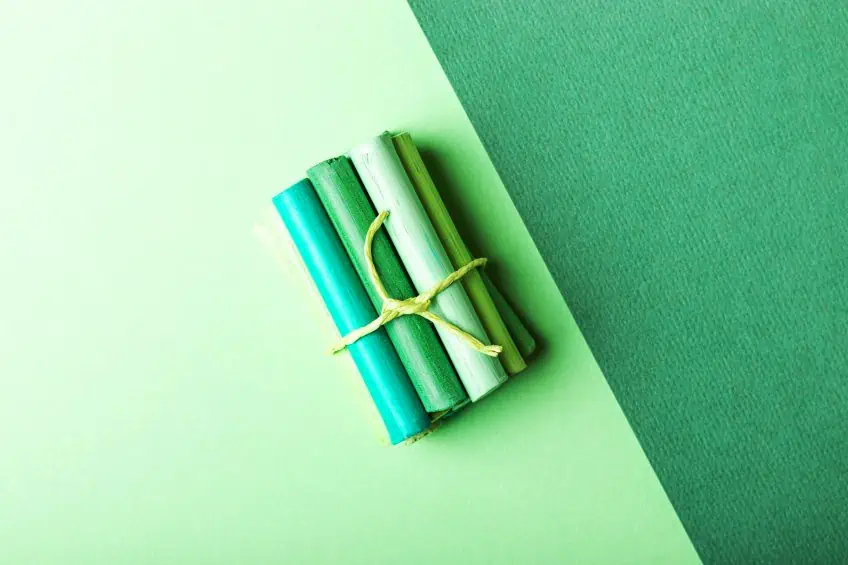
Dark Grayish Lime Green
This shade of Celadon has no official name, but it can be best described as a dark grayish lime green. This green shade is notably darker than celadon and could be confused with olive green because of its gray undertones.
| Shade | Hex Code | CMYK Color Code | RGB Color Code | Color |
| Dark Grayish Lime Green | #7B9E7F | 22, 0, 20, 38 | 123, 158, 127 |

Eton Blue
This shade of celadon is also known as “shelduck blue”. Despite the word “blue” in its name, it is, in fact, a shade of green. In the 19th century, Eton College sportsmen wore this color. It is also a similar shade of celadon used by the University of Cambridge.
| Shade | Hex Code | CMYK Color Code (%) | RGB Color Code | Color |
| Eton Blue | #99C49E | 22, 0, 19, 23 | 153, 196, 158 |
Greenwich
This shade of celadon is a medium to dark shade of cyan. A much darker hue when compared to the traditional celadon green.
| Shade | Hex Code | CMYK Color Code (%) | RGB Color Code | Color |
| Greenwich | #4A5E4C | 21, 0, 19, 63 | 74, 94, 76 |
Slime Lime
To the naked eye, slime lime and celadon appear to be the same shade, but, of course, both contain different amounts of red, green, and blue. This shade of celadon most likely lends its name thanks to the color of slime.
| Shade | Hex Code | CMYK Color Code (%) | RGB Color Code | Color |
| Slime Lime | #B7EBBD | 83, 235, 189 | 183,235,189 |

What Colors Go With Celadon Green?
Celadon green is a color that pairs up beautifully with other calm, warm colors such as beige or cream, but at the same time, it is complemented by the contrast of pink shades. Combining celadon green with white will help you achieve the feel you want if you are looking for a classic but calm interior. Let us take a look at some combinations you could use with celadon green.
Celadon Green in Interior Design
This color is quite popular in interior home design and works particularly well in dining and living rooms. The subtleness of the celadon color makes it so versatile that you can paint your whole room in this color or use it as an accent color against a white background. It pairs up exceptionally well with other shades of green such as olive and pistachio.
| Shade | Hex Code | CMYK Color Code (%) | RGB Color Code | Color |
| Celadon | #ACE1AF | 24, 0, 22, 12 | 172, 225, 175 | |
| Pistachio | #93C572 | 25, 0, 42, 23 | 147, 197, 114 | |
| Olive | #808000 | 0, 0, 100, 50 | 128,128,0 |
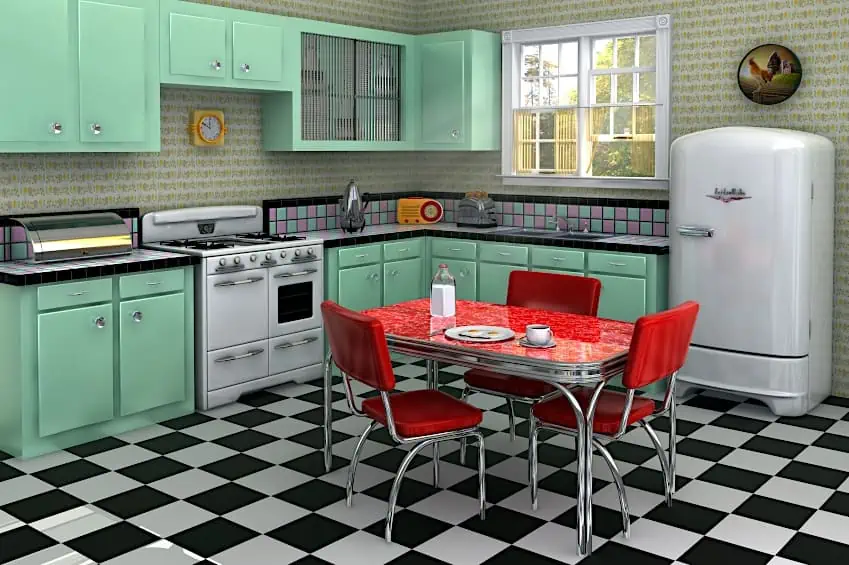
A beautiful warm interior will be created by using celadon green paint on the walls of a bedroom or sitting room. The color is so refreshing and can be used to paint all the walls in a room, but if that seems too much for you, you can easily use it to paint only one wall, which will then feature as an accent wall. The other walls can then be painted in a shade of white such as ivory.
| Shade | Hex Code | CMYK Color Code (%) | RGB Color Code | Color |
| Celadon | #ACE1AF | 24, 0, 22, 12 | 172, 225, 175 | |
| Ivory | #FFFFF0 | 0, 0, 6, 0 | 100, 100, 94.1 |
Because the celadon color is considered a universal color, it can be used in all spaces, both indoors and outside. The celadon color is often incorporated into a bedroom or living room using celadon green paint on the walls. If you would like to use celadon with a contrasting color, most light shades of pink will work beautifully.
| Shade | Hex Code | CMYK Color Code (%) | RGB Color Code | Color |
| Celadon | #ACE1AF | 24, 0, 22, 12 | 172, 225, 175 | |
| Pink | #FFC0CB | 0, 25, 20, 0 | 255, 192, 203 |

Interiors set up in a Scandinavian style will be enhanced even further with celadon green as it combines effortlessly with soft gray shades such as cerebellum, white, and natural wood colors such as burlywood. Pairing the celadon color with white and gold for the shabby chic style will make a room feel elegant and glamorous.
| Shade | Hex Code | CMYK Color Code (%) | RGB Color Code | Color |
| Celadon | #ACE1AF | 24, 0, 22, 12 | 172, 225, 175 | |
| Burlywood | #DEB887 | 0, 17, 39, 13 | 222, 184, 135 | |
| Cerebellum Gray | #C8C7C9 | 0, 1, 0, 21 | 200, 199, 201 |
Accessorizing Using the Celadon Colors
If you are looking at accessories that will completely change the interior of your home, then celadon green colors are the way to go. Textiles and other attractive interior accessories are widely available, such as blankets, bedspreads, vases, decorative figurines, curtains, carpets, and tablecloths. Celadon green decorations can completely change a room’s look and feel, especially if you want to make a quick change without too much hassle. Celadon and shades of brown, such as nutty brown, make for a beautiful and natural palette.
| Shade | Hex Code | CMYK Color Code (%) | RGB Color Code | Color |
| Celadon | #ACE1AF | 24, 0, 22, 12 | 172, 225, 175 | |
| Nutty Brown | #8A6F44 | 0, 20, 51, 46 | 138, 111, 68 |
Unlike sofas and armchairs, a celadon green wall unit with shelves and drawers is quite a nifty and original way to incorporate the color into your interior. If you have a predominantly beige sitting room and want to include celadon green, a wall unit would be the most effortless accessory to bring in, and the results will surprise you, especially if paired up with natural wooden elements. It is an exciting look and will add character to a room.
| Shade | Hex Code | CMYK Color Code (%) | RGB Color Code | Color |
| Celadon | #ACE1AF | 24, 0, 22, 12 | 172, 225, 175 | |
| Beige | #F5F5DC | 0, 0, 10, 4 | 245, 245, 220 |
Celadon is a color that doesn’t get the attention it deserves, often overshadowed by more popular and trendy shades of green. With so many colors to choose from as trends change every day, it is no wonder that we can sometimes forget about this humble green shade. Celadon green paint is one of the more beautiful and restful colors that can be incorporated into our living spaces for a relaxing and calm environment.
Frequently Asked Questions
What Colors Go With Celadon?
Celadon green mixes well with soft tones, such as gray, white, brown, and other neutral colors. It is one of the loveliest colors to use in the kitchen because of its attractive pairing with steel appliances. Lighter pink shades also work well with celadon green.
Who Coined the Term Celadon?
It would seem that the word first appeared in France in the 17th century. The celadon color was named after a shepherd who was named Celadon. He wore pale green ribbons in Honoré d’Urfé’s French pastoral romance, L’Astrée, in 1627.
Duncan graduated with a diploma in Film and TV production from CityVarsity in 2018, after which he continued pursuing film while taking on a keen interest in writing along the way. Since having graduated, he began working as a freelance videographer, filming a variety of music videos, fashion and short films, adverts, weddings and more. Throughout this, he’s won a number of awards from various film festivals that are both locally and internationally recognized. However, Duncan still enjoys writing articles in between his filming ventures, appreciating the peace and clarity that comes with it.
His articles focus primarily around helping up-and-coming artists explore the basics of certain colors, how these colors can be paired with other shades, as well as what colors are created when you mix one with another. All while relating these shades to historically significant paintings that have incorporated them into their color palette. As a lover of the arts himself, he takes great interest in the Renaissance era of paintings, an era that has directly inspired many of his favorite films.
Learn more about Duncan van der Merwe and about us.

